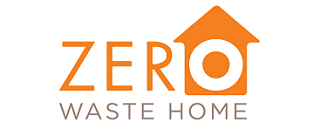My blog series The beauty of Zero Waste and Zero Waste Essential respectively point to the beauty that Zero Waste has brought into my life and the objects (or skills) that I have deemed necessary to achieve as close to Zero Waste as possible. The Refillable Fountain Pen applies to both.
Fountain pen fitted with a converter
In our digital and (increasingly) paperless age, handwriting is slowly losing ground. Elementary grades are substituting penmanship for keyboard skills. Teachers use the computer as an educational tool and note taking apps are replacing even the most spontaneous form of writing. In an effort to save paper, I do not use handwriting much either. Apart from filling a homemade notebook with ideas and drawing my own illustrations (time constraints and consideration for my publisher's sense of smell put an end to my feather and squid ink dreams), my book was completely done digitally. I touched my paperback for the first time on The Jeff Probst Show, scheduled to air on May 14th. So much of my work is done on the computer (typing about the Zero Waste lifestyle), over the phone (interviews, suggestions), or in person (speeches, media participation, consultations), that I now consider handwriting a treat...
The Zero Waste lifestyle inspires us to revisit nostalgic basics, and readopt practices that we shouldn't have dropped in the first place. Growing up in France, the use of the fountain pen was an integral part of my education (as it still is for French pupils today), yet I eventually dropped it for cheap ballpoint duplicates. Then when I embarked on Zero Waste, I opted for a ballpoint refillable model. But given the wasteful packaging that refills come in, I eventually realized that a refillable fountain pen was the most waste-free alternative for ink writing. And, boy do I love using mine: Writing with a fountain pen is as enjoyable as using a cloth napkin, or a ceramic plate. The reusable, durable alternatives, heighten the user's experience and respect for the item: You do not treat a fountain pen, a cloth napkin, or a ceramic plate as you would their disposable counterparts. Each use is a pleasure!
The few writing opportunities that still present themselves should follow Zero Waste principles. If you are in the market for a fountain pen, here are some pointers for choosing the right model:
The Zero Waste lifestyle inspires us to revisit nostalgic basics, and readopt practices that we shouldn't have dropped in the first place. Growing up in France, the use of the fountain pen was an integral part of my education (as it still is for French pupils today), yet I eventually dropped it for cheap ballpoint duplicates. Then when I embarked on Zero Waste, I opted for a ballpoint refillable model. But given the wasteful packaging that refills come in, I eventually realized that a refillable fountain pen was the most waste-free alternative for ink writing. And, boy do I love using mine: Writing with a fountain pen is as enjoyable as using a cloth napkin, or a ceramic plate. The reusable, durable alternatives, heighten the user's experience and respect for the item: You do not treat a fountain pen, a cloth napkin, or a ceramic plate as you would their disposable counterparts. Each use is a pleasure!
The few writing opportunities that still present themselves should follow Zero Waste principles. If you are in the market for a fountain pen, here are some pointers for choosing the right model:
Piston Fountain Pen with ink window
- Look for a vintage model. For secondhand purchases involving specific criteria, I like eBay. Make sure to select the "used" box in the options on the left hand side of the page before launching a search and request "paper or cardboard only" for shipping at check out. You can also visit a pawn shop or a consignment store for this particular item, but they tend to be "hit or miss".
- Look for a fountain pen model that will accept (or come with) a converter, which is a removable and refillable cartridge, or choose a piston model (my preference) which is refilled by turning a knob at the end of the pen (called a blind cap). The piston is a fixed filling mechanism, an integral part of the pen (the barrel is the reservoir) so it will hold more ink, and it's faster and less messy to fill. Both are pictured above. If you already have a fountain pen, the manufacturer might carry a converter for your model!
- Look for quality: I purchased the converter model above for Léo, but the quality turned out to be poor and the ink delivery inconsistent. I purchased a Mont Blanc for myself (a childhood dream), and I have found the quality to be unsurpassed, a real difference in the writing experience: Smooth and enjoyable. As with anything else, quality is worth the cost.
- Look for a model with an ink window so you know when to refill your pen. You don't want to run out when you're about to sign a million dollar contract or your first book;)
- Purchase a bottle of ink. Choose glass (with a metal cap if possible). For the Quink brand pictured, you'll have a choice between permanent and washable. I chose the former so it cannot be erased. Honestly, I did not research inks, when I bought my jar, I just wanted to support my local stationary store; Parker Quink is the only option they offered.



